How to Grow Onions In Paperpots (Paper Chain Pots)
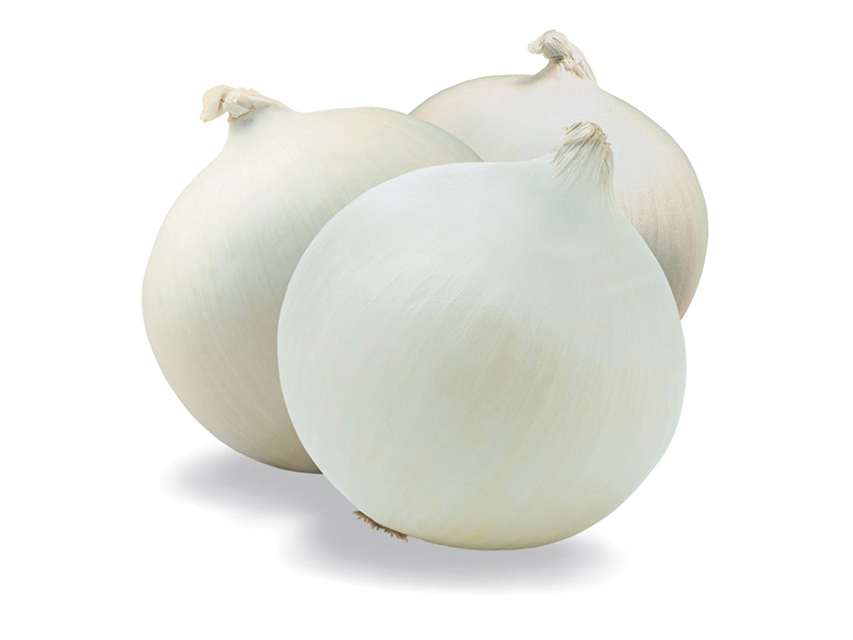

Growing Onions in Paperpots

Better germination!

No hand transplanting!

Less transplant shock!
Onions are one of the easiest crops to grow in paper chain pots. If you don’t get good results direct seeding onions, then consider starting them and transplanting them in paperchains; a process that will save you a lot of time over hand transplanting.
Onions are a relatively easy crop to grow for most market gardeners.
Direct seeding them can be very successful in the right conditions, but sometimes conditions don’t allow you to direct seed onions effectively, so transplanting is a better option.
Transplanting onions the traditional way is a very time consuming task. The seedlings are tiny and delicate and transplanting takes a long time.
The Paperpot Transplanter solves this problem.
It allows you to germinate seeds in a controlled environment then quickly and easily transplant them into the field at the appropriate time.
All without bending over and less transplant shock!
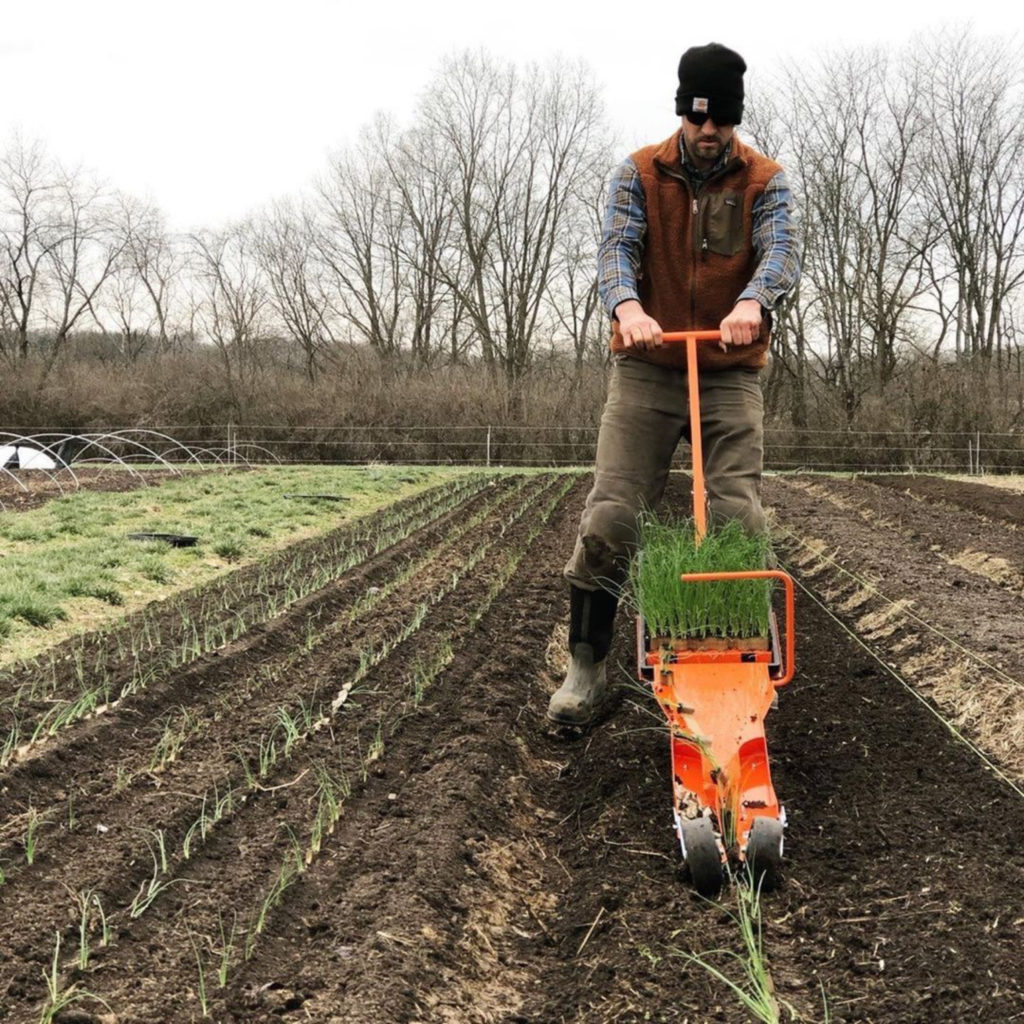

The Specifications for Paperpot Onions
| PAPER CHAIN POT | 6" |
| ROWS PER 100’ X 30” BED | 5 |
| TRAYS PER 100’ X 30” BED | 4 |
| KWIK KLIK™ TOP PLATE | Plate: Paperpot (264 holes) / Thickness: 3mm / Hole Diameter: 3mm |
| SEEDS PER CELL | 3 (+/-) |
| SEED PER 100’ X 30’ BED | 3000 seeds (+/-) *Always round up when placing seed orders to ensure having enough |
| RECOMMENDED CULTIVARS | Sierra Blanca (fresh variety), Red Carpet (storage variety) |
| GERMINATION | 72 hours at 80°F |
| DAYS TO TRANSPLANT | 45 days (+/-) *time from seeding to transplanting in the field |
| DAYS TO MATURITY | 110 days (+/-) *time from seeding to being ready for harvest |
| HARVEST WINDOW | 14 days (+/-) *time crop is at ideal stage for harvest after reaching maturity |
| TOTAL DAYS IN FIELD | 79 days (+/-) *DTM + harvest window - days to transplant |
| HARVEST UNIT | Pound |
| TARGET CROP YIELD | 350 lb (+/-) |
| PRICE PER UNIT | $3 *depending on local market pricing |
| REVENUE PER BED | $1050 *depending on local market pricing |
| SEEDING | Kwik Klik™ Drop Seeder, Paperpot Germination Trays, Paper Chain Pots |
| TRANSPLANTING | Paperpot Transplanter |
| TILTHING | Power Harrow or Precision Depth Roller (With no tractor: Tither) |
| AERATION | Meadow Creature Broadfork |
| SHAPING | Bed Preparation Rake |
| WEED CONTROL | Flame Weeder |
| CULTIVATION | Collinear Hoe, Wire Weeder, Flex Tine Weeder |

Suggested Tools for Paperpot Onions
Bed Preparation for Paperpot Transplanting

- Broadfork the bed to aerate and loosen the soil.
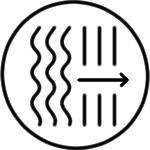
- Smooth and shape the bed with a bed preparation rake, removing any debris.

- Onions will do best with a fresh application of fertilizer prior to planting. Here are two options:
- 1) Layer on 1” of compost, enough to mostly cover the native soil.
- 2) Sprinkle on a combination of alfalfa meal and pelleted chicken manure.
- If layering compost, do not tilth in hopes of smothering any surface weed seed.
- If adding amendments, tilth the top 1-2” of soil to mix in amendments.
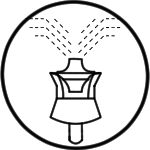
- Irrigate for 10-14 days*, allowing any weed seed in top layer of soil to germinate.

- Flame weed the bed when the cotyledons of the weed seeds have emerged.
Growing Onions in Paperpots
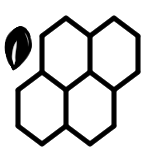
Seeding Onions in Paperpots
Prepare trays with 6” paper chain pots, and fill with potting mix.
Install Paperpot bottom plate and specified top plate into Kwik Klik™ (KK) Drop Seeder. Pour seed onto the top plate and rotate until approximately 3 seeds fill each hole.
Position the KK Drop Seeder over the tray, ensuring the holes are lined up with the cells, and click to drop the seeds.
Water the trays, then place in germination chamber for 72 hours at 80°.
Transfer the trays to greenhouse tables after germination.
Trim 1” off the top of the onions at 4 weeks, and then again at 1 week before transplanting.
Onions starts are ready for transplanting at about 7 weeks old and 6” tall.
Storage onions are planted once in Spring; fresh onions can be planted though out the season.
Thoroughly water trays before heading to the field for transplanting.
Using the Paperpot Transplanter, plant the five rows of onions.
There should be 6” between rows, and 3” from the outer rows to the edge of the bed.
Reference https://paperpot.co/learn/ for instructional videos if needed.
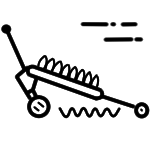
Transplanting Onions with the Paperpot Transplanter
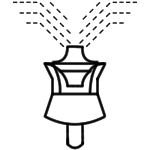
Irrigation
Water the beds thoroughly with overhead irrigation, or four rows of drip.
Frequent shallow waterings will support rapid growth and better onion flavor.
10-14 days after transplanting, cultivate using a collinear hoe or wire weeder.
Consistent weeding is crucial for onions as they will not form a canopy over the soil as they mature, unlike other closely spaced crops.
If thrips or onion flies are an issue, onion crops should be covered with insect netting.
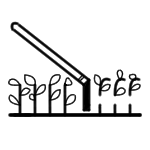
Cultivation (Weeding)

Harvesting Onions
Fresh onions can harvested with the tops on and bunched in the field (if selling by the bunch).
Storage onions should be harvested when the tops begin to die off (during dry weather).
Fresh onions: using a Washdown Gun sprayer over a root wash table, spray clean the onions until all soil is thoroughly cleaned off. Transfer the fresh onions to totes, and store at 35°.
Storage onions: place on nursery tables in a single layer and allow to cure for 2-3 weeks. A space with controlled ventilation, temperature and humidity is ideal. When the collars are dry, the stems can be cut and the onions can be stored in mesh bags or boxes. Store at 46° (+/-).
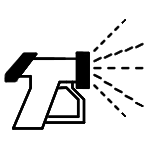
Washing and Packing Onions
Overall Paper Chain Pots make onions a much more farmer-friendly crop.
Time savings, ease of transplanting, and uniform planting distances are some of the reasons why onions are one of the most popular market garden crops grown in paperpots.
Get started growing onions on your farm using a Paperpot Transplanter and download the Growers Notes below.
INTERESTED IN PURCHASING A PAPERPOT TRANSPLANTER?
If you have any questions, please reach out hello@paperpot.co or 877.850.1555.
